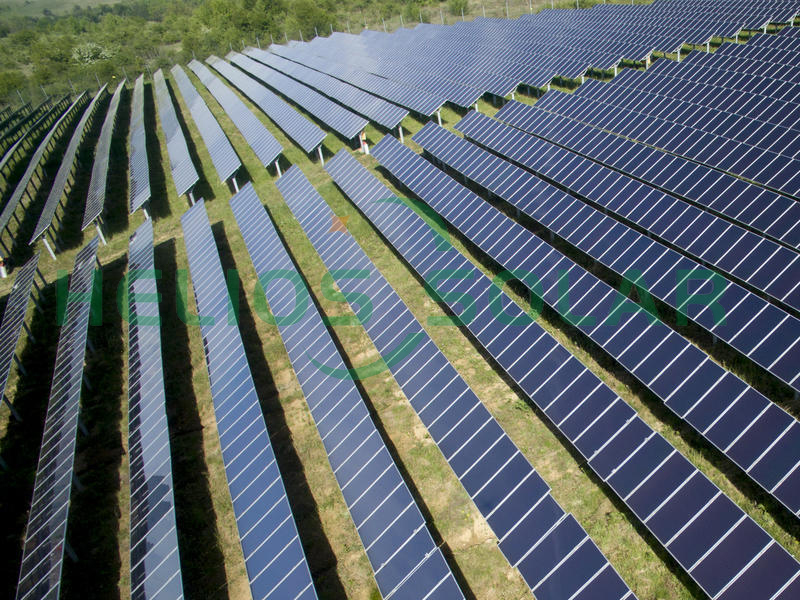In the solar world, the terms “module efficiency” and “cell efficiency” are often used interchangeably, leading to confusion among consumers and even industry professionals. However, it is important to understand that these two terms represent different aspects of solar technology and play different roles in determining the overall performance of a solar panel. In this article, we will delve into the differences between module efficiency and cell efficiency, clarifying their importance and impact on the effectiveness of solar photovoltaic systems.
Cell efficiency: the foundation of solar power generation
At the heart of a solar panel are solar cells, which are responsible for converting sunlight into electricity through the photovoltaic effect. Cell efficiency refers to the ability of a single solar cell to convert sunlight into electricity. It measures how efficiently a cell captures photons and converts them into usable electricity. Cell efficiency is a key factor in determining the overall performance of a solar panel because it directly affects the amount of power a given area of a solar cell can produce.
The efficiency of a solar cell is affected by a variety of factors, including the materials used in its construction, the quality of the manufacturing process, and the design of the cell itself. High-quality materials such as monocrystalline silicon tend to exhibit higher cell efficiencies compared to lower-grade materials. Additionally, advances in battery design and manufacturing technology over the years have resulted in increasing battery efficiency.
Module efficiency: the performance of the entire solar panel
Cell efficiency focuses on the performance of a single solar cell, while module efficiency considers the overall performance of an entire solar panel, which is composed of multiple interconnected solar cells. Module efficiency is a measure of how efficiently a solar panel converts sunlight into electricity, taking into account factors such as cell efficiency, power loss, and the overall design and structure of the panel.
In addition to the efficiency of individual solar cells, module efficiency is affected by other components of the solar panel, including the cells’ interconnections, the quality of the packaging materials, and electrical wiring and connections. These factors can affect the overall performance of the panels and lead to loss of power generation.
Understand the differences
The main difference between cell efficiency and module efficiency is their measurement range. Cell efficiency focuses on the performance of individual solar cells, while module efficiency considers the collective performance of all interconnected cells within a solar panel. Therefore, module efficiency is typically lower than cell efficiency because it takes into account other factors that may cause energy loss within the panel.
It’s worth noting that while cell efficiency provides valuable insights into the intrinsic performance of solar cells, module efficiency provides a more complete assessment of a solar panel’s actual power-generating potential under real-world conditions. Therefore, when evaluating the performance of a solar panel, both cell efficiency and module efficiency must be considered to gain a complete understanding of its performance.
Impact on solar panel selection
When choosing solar panels for a photovoltaic system, understanding the difference between module efficiency and cell efficiency is critical to making an informed decision. While high cell efficiency indicates the potential for greater power generation at the cell level, it does not necessarily guarantee the same level of performance at the module level. Factors such as module design, manufacturing quality and environmental conditions can affect the overall efficiency of a solar panel.
In fact, under real-world conditions, solar panels with higher module efficiency may outperform panels with higher cell efficiency, especially when factors such as shading, temperature changes, and system design are taken into account. Therefore, consumers and installers are advised to consider both module efficiency and cell efficiency, as well as other relevant factors such as warranty, durability and manufacturer reputation when selecting solar panels for a specific application.
Future of solar efficiency
As demand for solar power continues to grow, the pursuit of higher module and cell efficiency remains a focus of solar industry R&D. Advances in materials science, manufacturing processes and solar panel design are driving continued improvements in cell and module efficiency. These advancements not only improve the performance of solar panels but also help improve the overall cost-effectiveness of solar systems.
Additionally, emerging technologies such as tandem solar cells, perovskite solar cells, and bifacial solar panels have the potential to further increase the efficiency levels of solar photovoltaic systems. These innovations aim to push the boundaries of solar efficiency and make renewable energy a more attractive and competitive power generation option.
In summary, the difference between module efficiency and cell efficiency is critical to understanding solar panel performance. While cell efficiency reflects the inherent ability of an individual solar cell to convert sunlight into electricity, module efficiency provides a holistic view of the overall performance of the entire solar panel. By considering both measures, consumers and industry professionals can make informed decisions when selecting solar panels and designing photovoltaic systems, ultimately contributing to the widespread adoption of clean and sustainable solar energy.
If you are interested in solar photovoltaic systems, welcome to contact Radiance to get a quote.
Post time: Mar-15-2024


